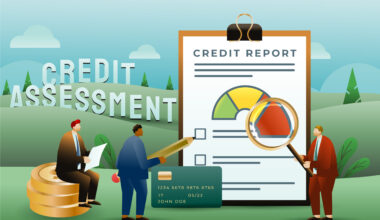Introduction
If you’ve ever felt the weight of bills stacking up, interest creeping higher, or your credit score slipping — you’re not alone. The topic of debt management & credit is one of the most urgent financial concerns for millions of people. Recent data shows heavy stress around debt, and yet many feel overwhelmed about where to begin. (PR Newswire)
In this post, we’ll walk through both sides of the coin: how to manage debt in a smart, sustainable way, and how to understand and improve your credit. We’ll use actionable steps, real-world context, and a conversational tone — because this isn’t just financial jargon, it’s everyday life.
Understanding Debt Management & Credit
Let’s start by clearing up what we mean by debt management & credit, since they are linked but distinct.
- Debt management = the strategies and behaviours you adopt to handle what you owe: loans, credit cards, lines of credit, etc.
- Credit = your borrowing capacity, credit score, credit history — how lenders view you and what terms they’ll offer.
Good debt management improves your credit, and good credit supports easier debt conditions. They work hand-in-hand.
Why this matters now
- A survey found that 42 % of Americans reported being somewhat or extremely concerned about their monthly credit card payments. (PR Newswire)
- A working paper found that for distressed borrowers, combining short-term relief with longer-term management plans provides much better outcomes.
- With global cost-of-living pressures and rising interest rates, managing debt well is more critical than ever.
So if you’re looking to take control, you’re doing the right thing. Now let’s dig into how.
The Pillars of Smart Debt Management
When it comes to debt management, think of a house built on three solid pillars: awareness, strategy, and action.
1. Awareness: Know what you owe
Start by listing out all your debts:
- Type (credit card, personal loan, auto loan, etc.)
- Outstanding balance
- Interest rate
- Monthly payment
- Status (current, late, etc.)
This simple inventory gives you the reality of the situation — many skip this step because it’s confronting but it’s essential.
2. Strategy: Choose your debt-management method
Once you know what you owe, pick a plan. Some of the most effective include:
- Debt snowball method: Pay off the smallest balance first while making minimum payments on the rest. Builds momentum.
- Debt avalanche method: Pay off the debt with the highest interest rate first — minimizes cost.
- Debt consolidation or DMP (Debt Management Plan): Merge multiple debts into one payment, perhaps at a lower rate. For instance, a recent article explains how DMPs offered by credit counselling agencies can help simplify repayment. (ideas42)
- Negotiating with lenders: Ask for lower interest, extended term, or hardship programmes. There’s empirical evidence that for people in crisis, combining short-term forbearance with longer-term plans improves outcomes.
Here’s a simple comparison table to help:
| Approach | Best-for | Pros | Cons |
|---|---|---|---|
| Snowball | Motivated by quick wins | Early success, easy to follow | May cost more interest if high-rate debts linger |
| Avalanche | Want to minimise total cost | Lower interest overall | Less instant gratification |
| Consolidation / DMP | Multiple debts, high interest, need simplicity | One payment, possibly lower rate | Requires discipline, may affect credit temporarily |
| Negotiation / Forbearance | Financial shock, inability to pay currently | Relief and breathing space | Doesn’t solve root cause if spending remains same |
3. Action: Behavioural changes that matter
Having a plan is one thing; sticking to it is another. Some practical changes:
- Trim discretionary spending: cut subscriptions, reduce dining out, pause unneeded purchases.
- Automate your payments where possible: fewer missed payments means fewer fees and credit hits.
- Track progress: seeing your balances go down is motivating.
- Build a small buffer/savings: even modest emergency savings reduce the likelihood of new debt.
- Change your mindset: view debt as a temporary burden, not a permanent state.
Behavioural-science research suggests these kinds of nudges (tracking, automation, visible progress) improve success in DMPs. (ideas42)
Now let’s turn to credit — your borrowing reputation — and how it interacts with debt.
What is “credit” in real terms?
- Credit score: A number reflecting your creditworthiness.
- Credit history: Records of your borrowing, repayments, late payments, etc.
- Credit utilisation: The percentage of your available credit you’re using — higher utilisation often means higher risk.
- Types of credit: Installment loans (e.g., car loans, mortgages) vs revolving credit (credit cards). Having a healthy mix can be helpful.
Why credit matters
- It influences what interest rates and terms you get when you borrow.
- It can affect insurance premiums, rental approvals, job applications in some countries.
- A better credit score gives you more options and lower cost of borrowing.
How to improve your credit
Here are actionable steps:
- Make payments on time — on-time payment history is one of the strongest factors.
- Keep credit utilisation low (many experts recommend below 30 %).
- Limit opening multiple new credit accounts in a short period.
- Maintain older credit accounts — age of account matters.
- Check your credit report regularly for errors or fraud.
How debt management helps your credit
Effectively managing your debt will naturally support your credit:
- Reducing balances lowers credit utilisation.
- Avoiding late payments prevents negative marks.
- Having fewer, more manageable debts typically boosts your credit profile.
So combining debt management & credit improvement isn’t just additive — it’s synergistic.
Common Pitfalls & How to Avoid Them
Even with the best intentions, people get tripped up. Here are some common mistakes when dealing with debt management & credit — and how to sidestep them.
Mistake 1: Ignoring the problem
Procrastination allows interest and stress to build. One survey found 21 % of people with debt had taken no steps in six months. (PR Newswire)
Fix: Set a date this week to list all your debts and pick one step you can do now.
Mistake 2: Taking on more debt while trying to pay it off
Opening new lines of credit or using more of existing ones undermines progress.
Fix: Freeze new borrowing unless absolutely essential; consider removing stored card details from online accounts to reduce impulse use.
Mistake 3: Choosing bad “solutions” like aggressive settlement or risky schemes
Some debt settlement offers may result in worse outcomes. According to the regulatory body, debt settlement “may well leave you deeper in debt than you were when you started.”
Fix: Always research providers carefully, and if a deal seems too good to be true, proceed cautiously.
Mistake 4: Focusing only on debt and ignoring credit repair
Paying off debt but continuing to miss payments, open many new accounts, or carry high utilisation can still harm credit.
Fix: Make your debt-management plan include credit repair steps as described above.
How to Build a Personal Plan for Debt Management & Credit Improvement
Here is a step-by-step personal plan you can follow, tailored for everyday use.
Step 1: Gather your numbers
- List every debt: amount, rate, monthly payment.
- Pull your credit report/score (if available in your region) and note your current utilisations and account ages.
Step 2: Choose your repayment method
- Decide: snowball, avalanche, DMP, or negotiate.
- Pick one that suits your personality (do you need quick wins? then snowball. Want long-term cost minimisation? then avalanche).
Step 3: Commit to behaviour changes
- Make a budget: income minus fixed expenses minus debt repayments equals disposable.
- Automate payments where you can.
- Avoid new credit unless necessary.
- Build a small “buffer” fund (even $100 or equivalent) to avoid reliance on credit when emergencies hit.
Step 4: Track and adjust
- Every month: update your debt list, note what changed.
- Every quarter: check credit score/credit report to see improvements.
- Adjust if you overshoot or undershoot your budget — flexibility is key.
Step 5: Set milestones and celebrate progress
- Example milestones: paid off first loan, utilisation below 30 %, credit score up 50 points.
- Celebrate small wins — it helps with motivation and keeps the momentum going.
Frequently Asked Questions (FAQs)
Q1: Will paying off all my debt instantly fix my credit score?
Not necessarily. It will help, especially if you reduce high utilisation and avoid late payments. But credit score algorithms also consider account age, mix of credit, and other factors.
Q2: Is debt consolidation always a good idea?
It can be, especially when you reduce your interest rate and simplify payments. But it’s not a fix for underlying spending problems. If you just roll debts and keep spending, you’ll end up in the same spot.
Q3: How long does it take to rebuild credit after serious problems?
It depends on the severity, but consistent good behaviour (on-time payments, low utilisation, no new debt) will gradually improve your profile. Some studies show behaviour-based programmes for DMPs improve outcomes over 3-5 years.
Q4: Can I manage debt without professional help?
Yes — many people do. But if you’re deeply distressed, behind on payments, or facing threatening collections, seeking help from a nonprofit credit counselling agency can be wise. Demand for these services has surged recently.
Thinking Ahead: Credit & Debt in a Changing World
Managing debt and credit isn’t static — it changes with economic conditions, interest rates, and personal life events. Some considerations for the future:
- In times of rising interest rates, carrying high-interest debt becomes more burdensome.
- Economic shocks (job loss, health crisis) can derail even good plans — that’s why a buffer and flexibility matter.
- Behavioural biases (like optimism bias or overconfidence) affect borrowing decisions and repayment behaviour. Research shows that student debt behaviours are influenced by these biases. (arXiv)
- Digital access to credit (buy-now-pay-later schemes, micro-loans) increases both inclusion and potential for debt traps. (arXiv)
Staying aware of these macro-trends helps you keep your personal plan resilient and adaptive.
Conclusion
Mastering debt management & credit doesn’t happen overnight — but it’s absolutely within your reach. By combining awareness, a clear strategy, behavioural action and time, you can turn things around. Whether you’re dealing with high-interest credit cards, multiple loans, or simply wanting to improve your credit score, the steps are the same: know your numbers, pick your method, stay consistent, and monitor your progress.
You don’t have to be perfect — you just have to move. Each small step builds into momentum. And as your debt decreases and your credit strengthens, you gain flexibility, freedom and peace of mind.
Feel free to come back to this guide anytime as a reference. You’ve got this.
References used:
- Survey showing concern about credit card payments and lack of action. (PR Newswire)
- Study on distressed borrowers and long-term repayment plans. (FinRegLab)
- Behavioural insights into improving debt-management plan outcomes.
- Data on demand surge for credit counselling services.





